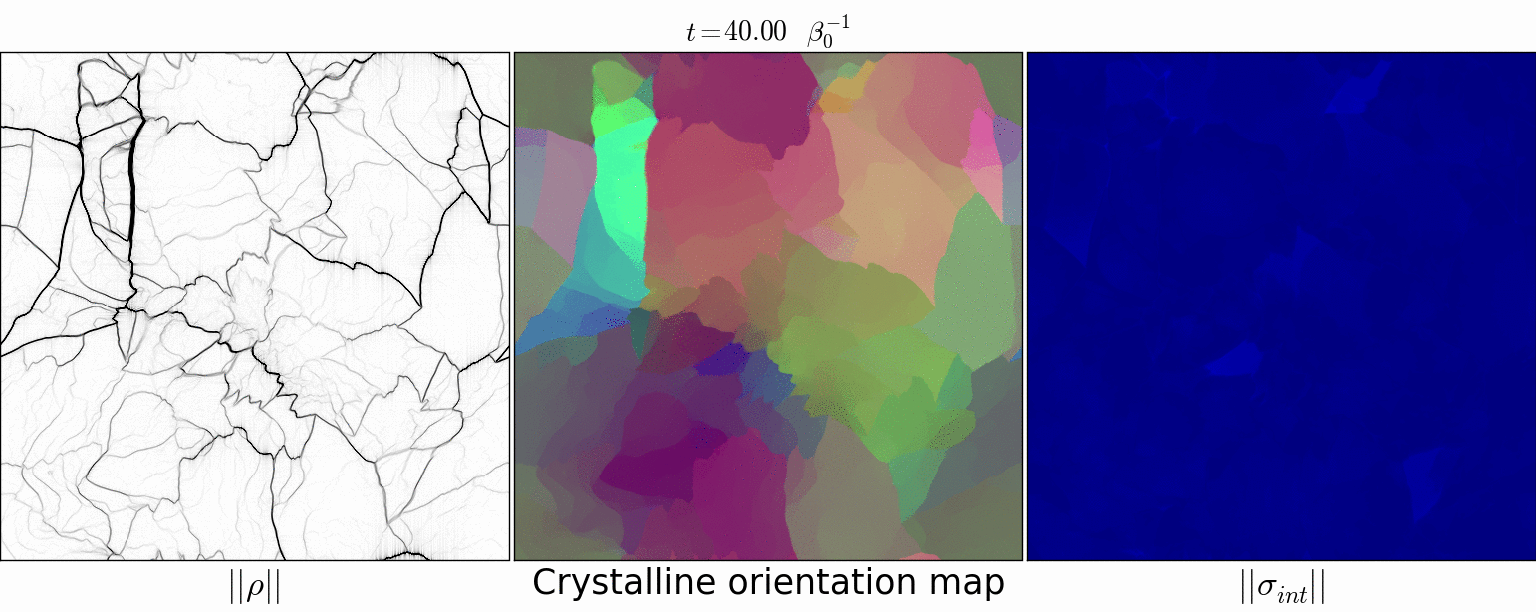

|
| Movie 1: Climb & Glide. Relaxation of Gaussian random initial conditions, where dislocations are allowed to glide and climb in the absence of external strain. Left: Net dislocation density; Middle: Crystalline orientation map; Right: Magnitude of internal stress field (the scale is linear with a range of almost four decades). Note the development of sharp grain boundaries. |
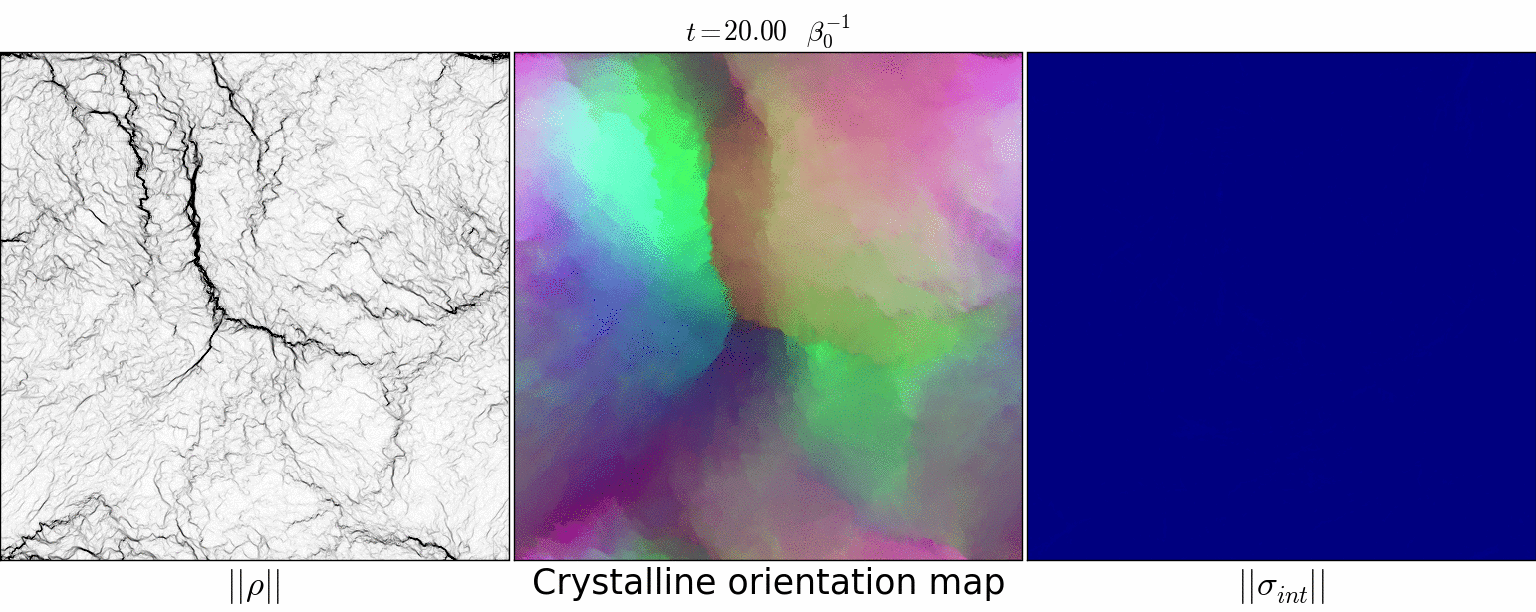
|
| Movie 2: Glide Only. Relaxation of Gaussian random initial conditions, where dislocations are only allowed to glide in the absence of external strain. Left: Net dislocation density; Middle: Crystalline orientation map; Right: Magnitude of internal stress field (the scale is linear with a range of almost four decades). Note the fuzzy, hierarchical cell wall patterns; we argue that they are self-similar and fractal. |
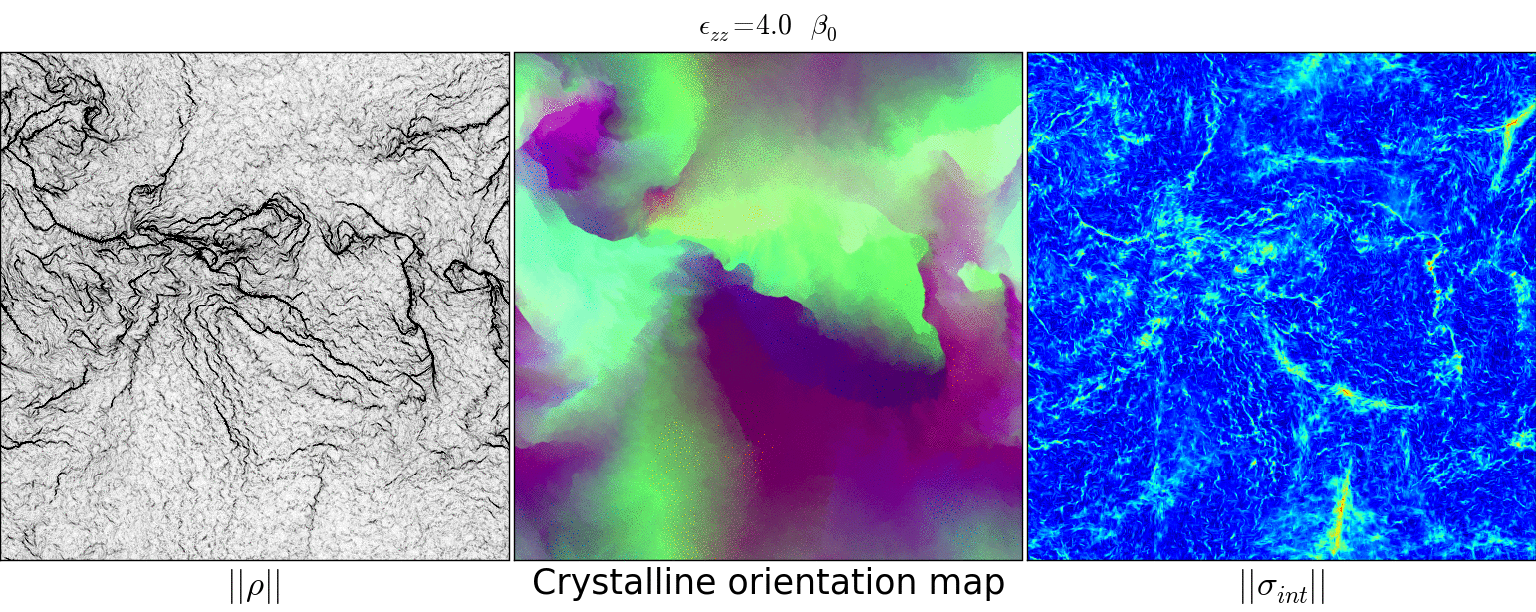
|
| Movie 3: External Strain, Glide only. Uniaxial external strain perpendicular to the simulated system was applied with rate ǫ ̇ = 0.05β02. Left: Net dislocation density; Middle: Crystalline orientation map; Right: Magnitude of internal stress field (the scale is linear with a range of approximately three decades). Notice the refinement (shrinkage of typical cell sizes). |
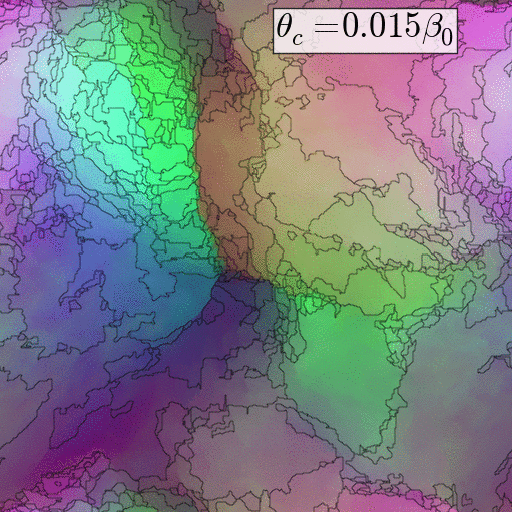
|
| Movie 4: Boundary pruning method. Boundaries are removed in order of their average misorientation angle, and then these cells are pruned based on their perimeter/area ratio and misorientation angle. |
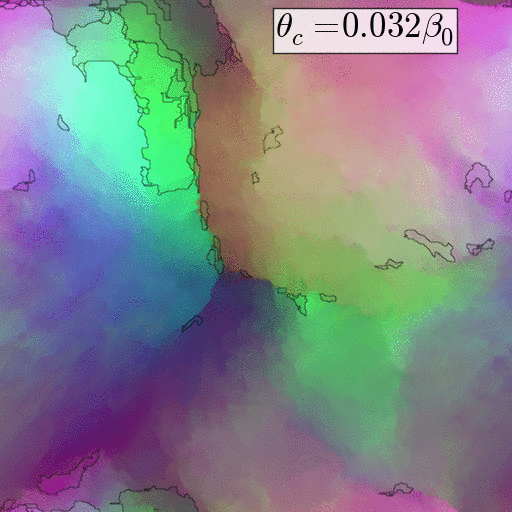
|
| Movie 5: Boundaries as a function of minimum misorientation angle θc. |
James P. Sethna, sethna@lassp.cornell.edu; This work supported by Basic Energy Sciences in the Department of Energy (DOE BES DE-FG02-07ER46393).
![]() Statistical Mechanics: Entropy, Order Parameters, and Complexity,
now available at
Oxford University Press
(USA,
Europe).
Statistical Mechanics: Entropy, Order Parameters, and Complexity,
now available at
Oxford University Press
(USA,
Europe).